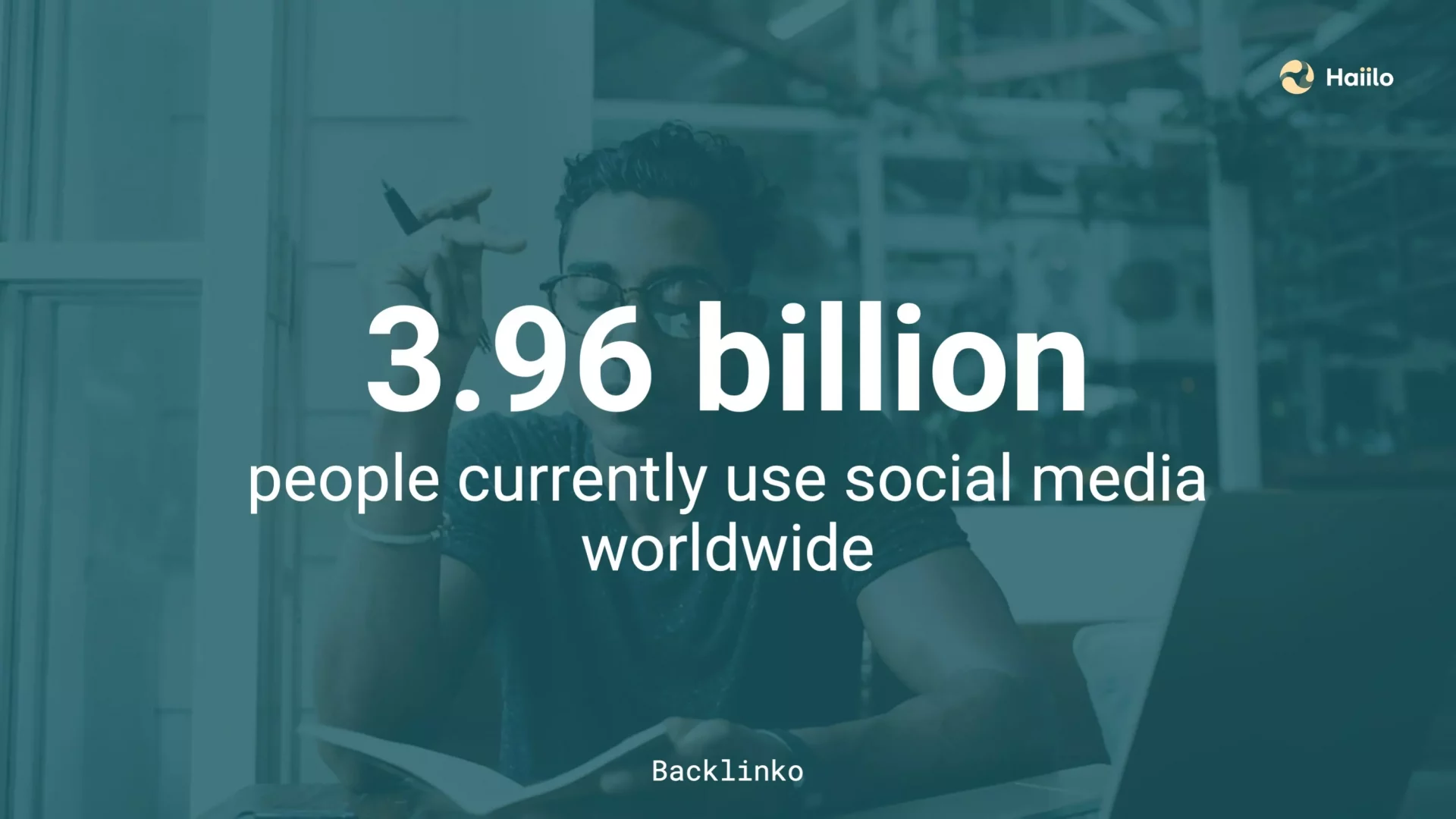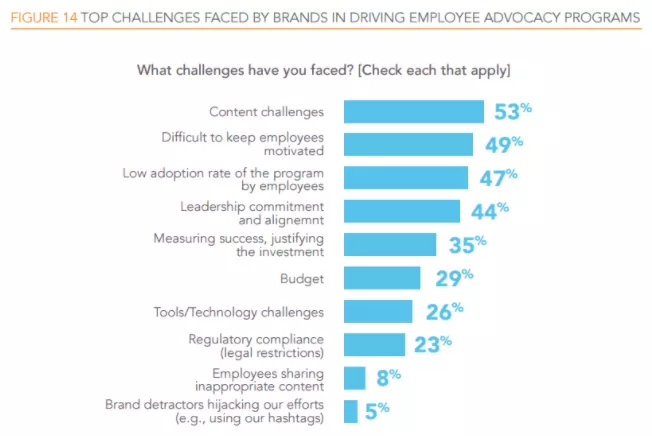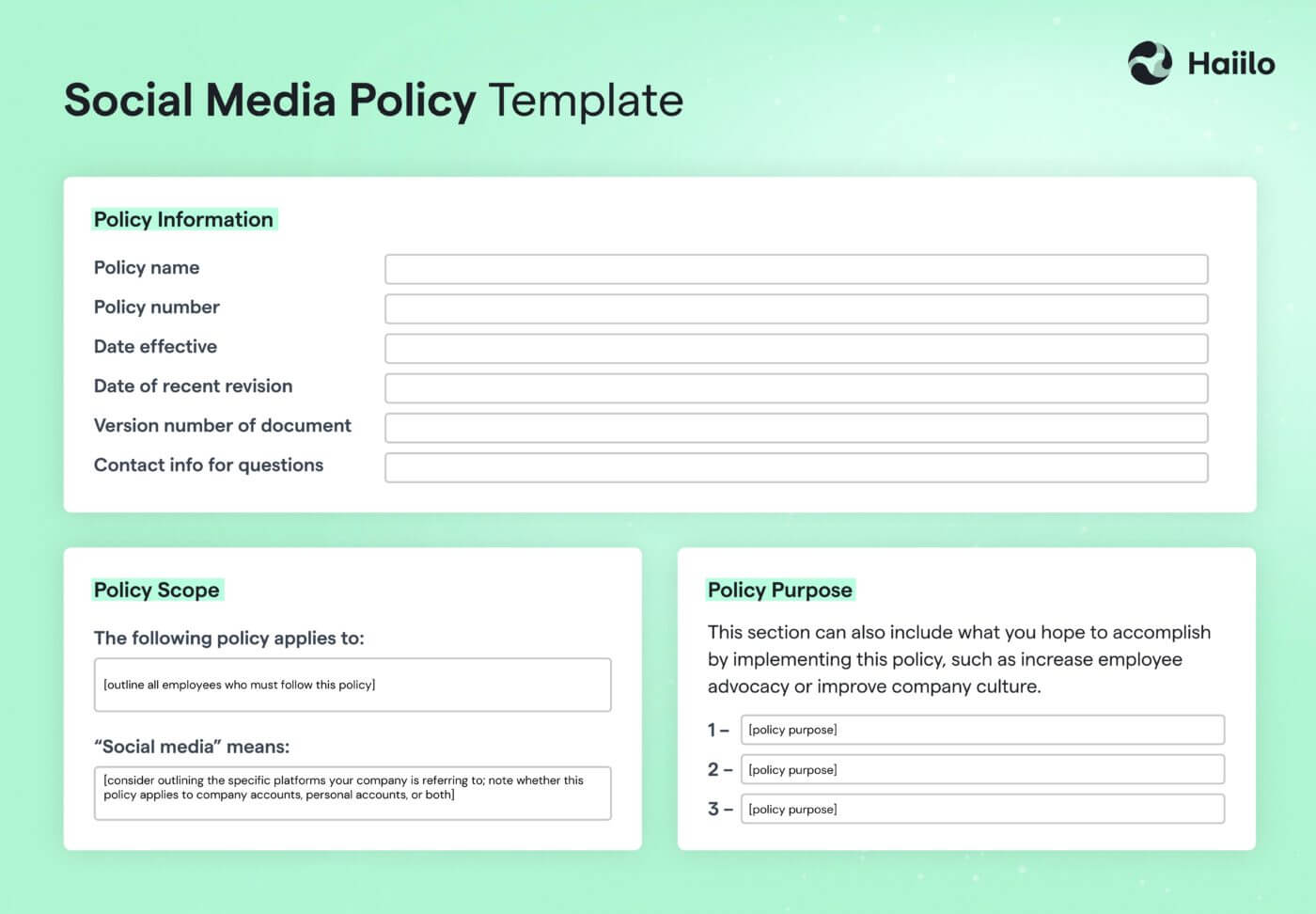Every organization should have a proper social media policy that should guide employees about what kind of actions and behaviors are acceptable on social media channels.
In this blog, we will talk about why is it important to have a social media policy and what should these policies consist of. You will also find a few great social media policy examples.
What Is a Social Media Policy
A social media policy is a corporate code of conduct that provides guidelines for employees who post content on social media either as part of their job or as a private person.
A good social media policy is a living document that provides detailed guidelines and best practices for your organization’s social media use.

Every social media policy should cover your brand’s official social media channels, and it should explain how employees should use social media for personal and professional purposes.
📙 Download our Social Media Starter Kit for Professionals.
Why Should Every Organization Have a Social Media Policy
Boosting employee engagement on social media is one of the biggest social media trends today. So having a social media policy is crucial for any organization, even for the ones that may not have official social media profiles.
The goal of every social media policy should be to set expectations for appropriate employee behaviors and actions, and it ensures that an employee’s engagement on social media doesn’t expose the company to legal problems or public embarrassment.
Furthermore, clear social media policies provide confidence to employees about how to act on social media, resulting in higher employee advocacy that result in better marketing and brand trust, more sales, and higher profits.
💡 Learn more about the true power of employee advocacy.
Here are a few powerful statistics that prove the importance of employee advocacy in the workplace:
- Companies with a successful employee advocacy program are 58% more likely to attract and 20% more likely to retain top talent (LinkedIn)
- 90% of B2B buyers are more likely to engage with salespeople who are seen as industry thought leaders and 82% are experienced increased trust as a result of thought leadership content (LinkedIn)
- 73% of sales teams that use social selling outperformed peers (Aberdeen Group)
- Customers referred by advocates have a 37% higher retention rate (Deloitte).
- On average, employees have social networks that are 10 times larger than their company’s network (LinkedIn).
But how to build a good social media policy for your organization?
Keep reading to find out!
How to Put Together a Proper Social Media Policy
Creating a proper social media policy is one of the most important steps in building a killer social media strategy.
Even though 98% of employees use at least one social media site for personal use, of which 50% are already posting about their company, 63% of employees say their employer has no social media policy.

As a consequence, these employers often see low employee engagement on social media, less curated content, and lower brand’s share of voice. Many of them also face situations when employees post inappropriate social media content or content that doesn’t align with the overall company strategy.
Let’s take a deep dive into what should every social media policy consist of.
1. Define owners for each social media channel
Every social media policy should have a list of people responsible for managing the organization’s social media channels. In the policy, you should include their contact information so that employees can reach out to them directly if they have any specific questions or concerns.
2. Define security protocols
With the increase of remote work and hybrid workplaces, many organizations are at higher cybersecurity risk than they were before the pandemic.
Research by Cyber Readiness Institute found that 56% of owners believe that their employees’ social media use poses a cybersecurity threat to their business. Despite their fears, 67% of business owners allow their employees to use social media applications on work devices.
Furthermore, more than half of employees (56%) said that their company has not issued new guidelines on the use of social media apps on work devices since the COVID-19 pandemic had triggered the introduction of remote working.

Therefore, every social media policy should have clearly defined security protocols and guidance for employees.
3. Create a social media crisis management plan
What should employees do and how should they act in cases of PR crisis? Your employees’ engagement on social media in case of PR crisis can make or break your company’s reputation.
Therefore, every social media policy should include a detailed crisis communications plan.
4. Provide guidance and content for employees’ social media profiles
Many employers encourage their employees to have consistent social media profiles. For example, on LinkedIn, we can see that many employees from the same companies have the same cover images that represent the organization’s core values, differentiators, and brand image.
If LinkedIn marketing is important for your company, consider doing the same!
Here, it is important to provide ready-to-use content for every employee. The best way to achieve greater results is by including these in your employee onboarding programs.
You can provide content for:
- Cover images
- Profile images (if your company provides professional employee headshots)
- Short tagline
- Long description
- Company links and media
5. Clearly describe acceptable and non-acceptable behaviors on social media
Employees should have a clear reference about what kind of behavior is and isn’t acceptable on social media. The best way to showcase these is by creating a social media do’s and don’ts table.
Here are some do’s and don’ts to consider.
Do’s:
- Be responsible. Make sure you’re engaging in social media conversations the right way. Your communications should typically reflect your area of expertise.
- Follow terms and conditions for social networking sites.
- Ensure your posts do not create a real or perceived conflict of interest.
- Get approval from the Privacy Department for contests or promotions directed toward customers or employees.
- Protect yourself. Be careful about what personal information you share online.
Don’ts:
- Don’t post sensitive, private, or confidential company information (e.g., unannounced product launches and promotions, internal sales results, company strategy, pricing information, or comparisons).
- Don’t give out personal customer information (e.g., personal addresses, phone numbers, or credit card information)
- Don’t post photos of or make negative comments about our customers and do not share details about customer visits without their permission.
- Don’t discriminate. We do not tolerate discrimination (including age, sex, race, color, creed, religion, ethnicity, sexual orientation, gender identity, national origin, citizenship, disability, or marital status).
6. Explain where to access company’s content and how to amplify it
Even though the benefits of employee advocacy are obvious, many organizations are still struggling to implement formal advocacy programs. These are the most common reasons why:

If you don’t have a way to make it easy for employees to find and share your organization’s content, it is very unlikely for them to get involved.
Luckily, the right technology can help!
Sophisticated employee advocacy solutions serve as a central place where employees can find and share all your organization’s content and boost your company’s brand awareness. They can also segment your internal audiences to make sure that employees have easy access to content relevant to their locations, job roles, interests, and other criteria.
If you have employee advocacy software in your organization, your social media policy should include clear guidance on how to use the software to amplify existing company’s content.
7. Include an employee recognition program to boost engagement
Modern employee advocacy solutions also enable you to track your employees’ advocacy initiatives and reward them accordingly in order to boost their motivation to participate.
If you have such a recognition program your social media policy should explain how your employees can collect social media advocacy points and what are some ways to redeem them.
6 Great Social Media Policy Examples
When it comes to employee advocacy, many organizations are still learning how to better leverage it. On the other hand, some organizations have witnessed impressive results from their employee engagement on social media.
These are a few of the organizations that have mastered their social media policies and are, therefore, seeing impressive achievements from their employee advocacy programs.
Coca-Cola
Coca-Cola’s social media policy embraces employee involvement online from the get-go. The policy calls out different groups and provides specific advice to each, and it provides clear guidance on how to handle online criticism, including relevant contact information.
KPMG
The biggest reason why KPMG is on this list is the fact that they put their social media best practices in a form of video. Since video is the most preferred form of content for many people, the idea of creating a short social media video policy is just great!
FedEx
FedeEx’ social media policy provides clear directions for handling conflict, along with contact information:
“FedEx has a staff of individuals who monitor social media and are trained to respond to customer service or other complaints on social media. Let the FedEx social media team respond to the complaint or, if you believe they are not aware of the complaint, report it at [email protected].”
They have also put more effort into making this material visually more appealing and easier to consume.
Adobe
This social media policy provides a clear distinction between official and unofficial social media posting.
It does a great job tying behaviors back to a company’s principles and core company values.
Pfizer
Pfizer included its social media policy in the company’s Blue Book which provides the summary of Pfizer’s policies on the business of conduct.
It does great guidance about how to behave on social media, and compared to many other examples, this document looks very professional and fun to consume.
Xerox
Xerox’s social media policy site is a great example of content that’s very easy to consume and remember. It is not packed with information, and its playfulness makes it easy to remember and understand.
If you are looking for a platform that can skyrocket your company’s social media reach – get in touch with us!










